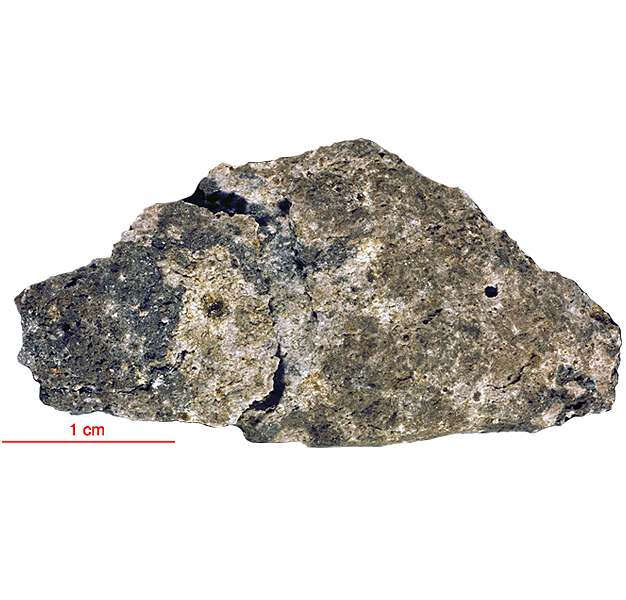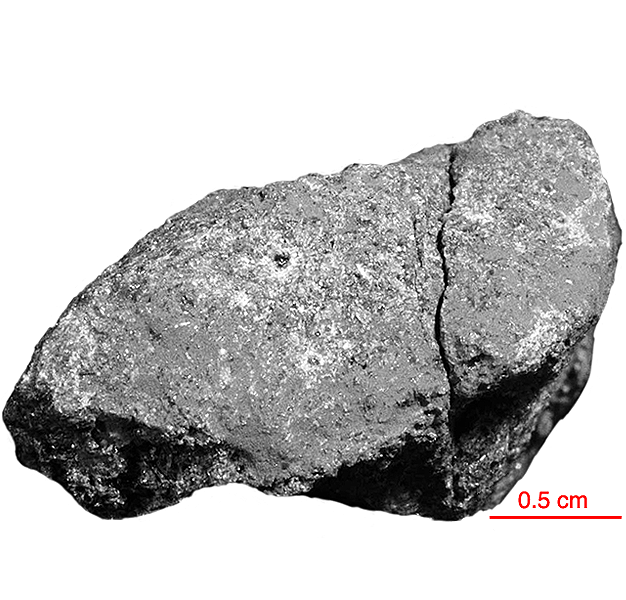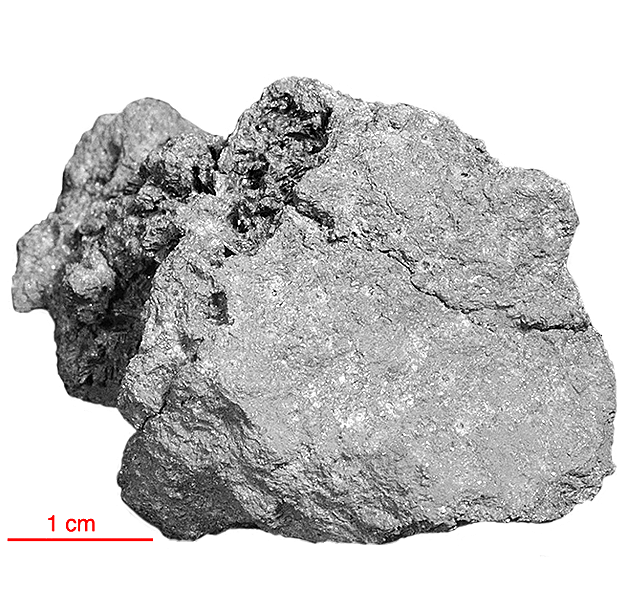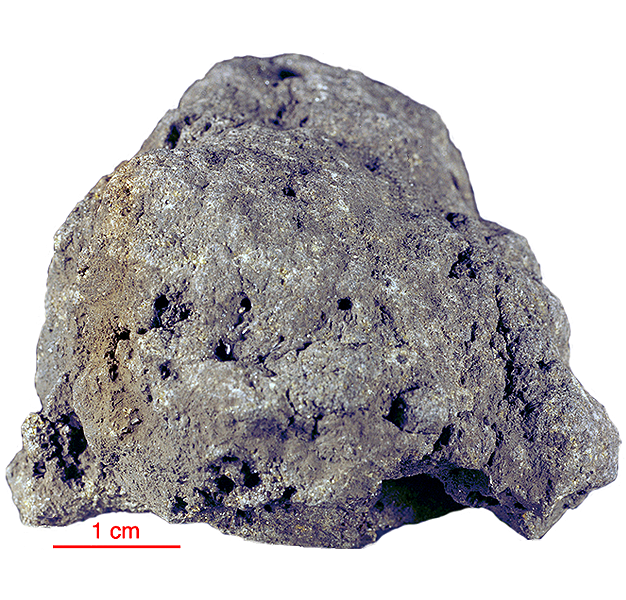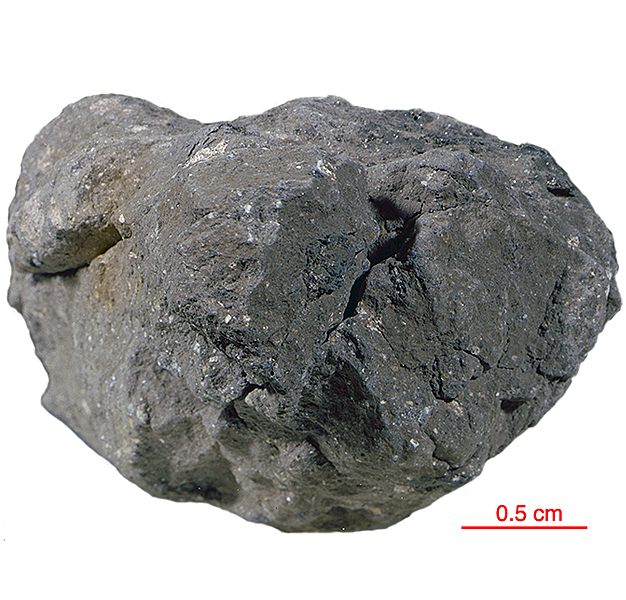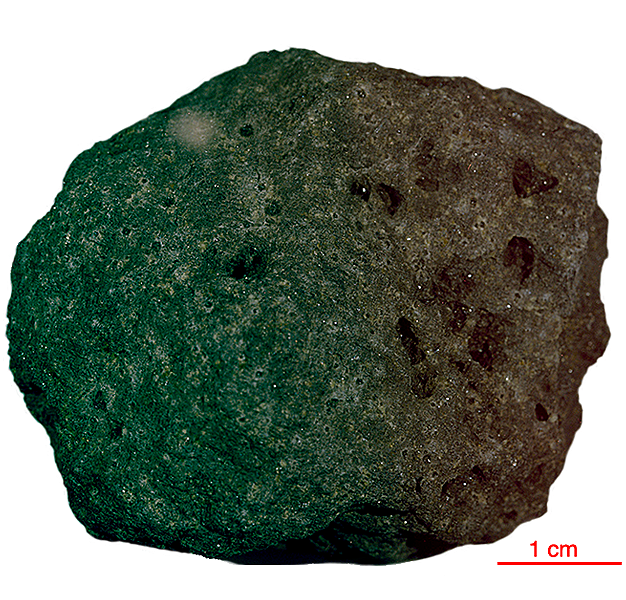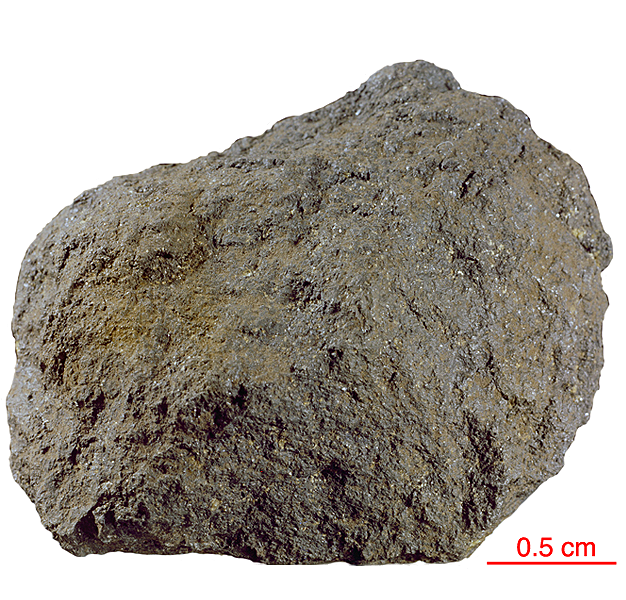
Fact sheet
12008 is an olivine vitrophyre containing ~15-20% equant subhedral to euhedral phenocrysts of olivine (0.2 -0.5 mm) heterogeneously distributed in the opaque groundmass as glomerophyric aggregates. Small chromite grains with attached Fe-Ni metal grains are found in the groundmass or attached to the rims of the olivine phenocrysts. Olivine includes spherical melt inclusions. A second generation of olivine occurs as chains of skeletal microphenocrysts. The fine-grained opaque matrix is made of microlites of aluminous titanaugite, ilmenite and plagioclase.
The sample weighed 58.4 grams before analysis and is about 3.2 billion years old.
Further details of this and other Apollo samples are here: http://curator.jsc.nasa.gov/lunar/
Apollo 12 returned 34 kilograms of samples, including 45 rocks, samples of lunar 'soil', and several core tubes that included material from as much as 40 centimetres below the lunar surface.
Apollo 12 rocks were almost all basalts, with only two breccias in the returned samples. The basalts at the Apollo 12 site formed 3.1 to 3.3 billion years ago, roughly 500 million years later than the Apollo 11 basalts. Overall, there is much less of the element titanium in the Apollo 12 samples than in the Apollo 11 samples, which explains the more reddish colour of this region. The differences in age and chemical composition between the Apollo 11 and Apollo 12 samples demonstrate that mare volcanism did not occur as a single, Moon-wide melting event.
Apollo 12 was launched on 14 November 1969.

